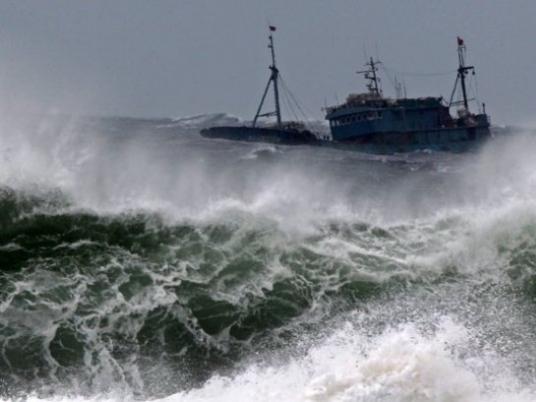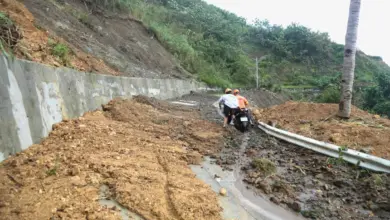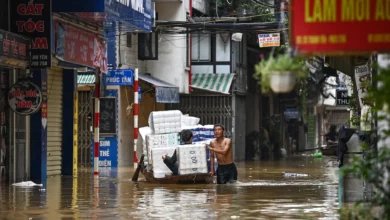
A typhoon with winds of up to 170 kmh (106 mph) buffeted South Korea's west coast on Tuesday, leaving four dead and a dozen people missing after two Chinese fishing vessels capsized.
Typhoon Bolaven was expected to eventually make landfall in flood ravaged North Korea late on Tuesday, hitting already damaged farmlands as the country struggles to feed its 24 million people.
Emergency authorities and refiners reported little damage from Bolaven as it tracked through the Yellow Sea, dumping heavy rains on the southern island of Jeju and along the Korean peninsula's coastal regions.
China's Meteorological Administration issued warnings of possible flooding in the coming days that could affect corn and soy crops in parts of its three northeastern provinces that produce about 30 percent of corn output and 40 percent of soy.
Coast guard rescuers pulled 13 surviving Chinese fishermen from the vessels that capsized off the southern shore of the Jeju island, along with four dead, and were searching for 12 others still missing, the emergency services said.
In South Korea, schools were closed for the day in the capital region and in the south, but financial markets, industrial and energy installations and government services remained in operation as the storm steered off the coast.
Hundreds of international and domestic flights serving South Korea were cancelled, most scheduled to depart or arrive at the main gateways in Incheon and Gimpo, the transport ministry said.
The storm was expected to hit the southern part of North Korea's west coast, near the farming regions surrounding the capital Pyongyang, the South's national weather service said.
The destitute North, which has trouble feeding its people even in years with good harvests, has said heavy rains in July and August inundated farmlands and triggered landslides, killing hundreds and leaving families homeless.
The U.N. World Food Program and an alliance of South Korean aid groups have offered to provide food aid.




